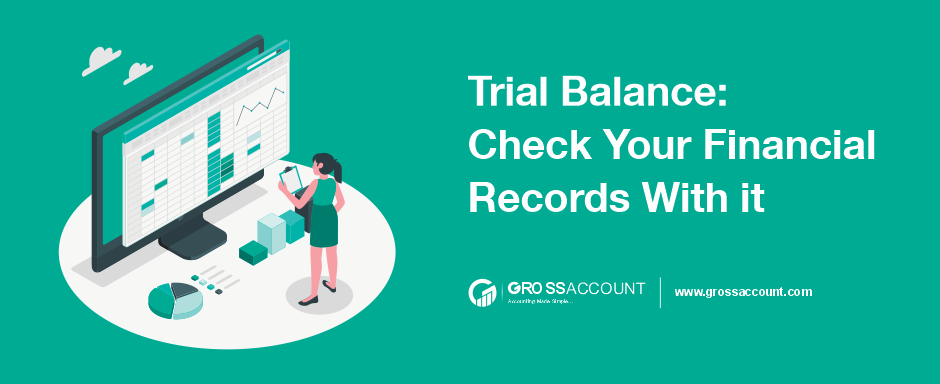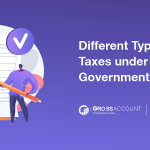Introduction
Accounting is a difficult task to perform. It needs to be focused on one thing, particularly at one time. Because one missing piece can cause a big effect on the account statements. There the Trial Balance comes into the picture.
However, Big companies do not want to fall at the end of the financial year. Because their amount statements are big numbers. So, by using Trial Balance accountants can maintain the organization’s integrity at their hand. With a trial balance, they can maintain the trust of each department. If they are working properly on their ledger accounts.
In this blog, we will see details about what is the Trial Balance. What are the uses, and types of trial balance, why do we need that, etc?
Why do We need to create a Trial Balance?
By the rules Double entry system, When the company’s daily check-in and check-out of money are processed, it counts down to the general account. Then after all business post this general account to the ledger account. So after all of the money is posted in the ledger account we need to check if it is true or not. (check if there is entry is missing or not) So, creating a statement for the checking process where an entry missing in the ledger or not. It is called a trial balance statement. This statement can prepare on any date at the end of the financial year.
What is in the Trial Balance?
It shows the balance with the help of the ledger account. We write debit entries on one side and credit entries on the other side. All the Debited amounts will write down on the debit side and all the Credit amounts will write down on the credit side. And if the sum of all out-debited amounts is equal to the credited amount then we will say that the company’s all accounts are working properly. But if their debit amount is not the same as the credit amount then there is a possibility of some mistake being taken in the ledger account. So, the trial balance aims to find the mistake in the ledger account. (If there is)
On a trial balance basis, we can prepare a balance sheet, profit and loss account, and trading accounts. As we show earlier.
Also Read: Importance of Having a Business Balance Sheet
Definition of the Trial Balance:
“Trial Balance is a statement prepared with the debit and credit balances of ledger accounts to test the arithmetical accuracy of the books.”
- J.R.Batliboi
Features or Characteristics of Trial Balance:
1) There is a list of all ledger accounts and cash book balances.
2) The statement is not an account, but only a statement.
3) It can be prepared at any time during the accounting period. (Usually prepared just before preparing the final account)
4) It is prepared to check the arithmetical accuracy of the ledger accounts.
Objectives or Functions of Preparing Trial Balance
1) Certain the arithmetical accuracy of the ledger accounts.
2) To help in locating errors.
3) It obtain a summary of the ledger accounts
4) It help in the preparation of final accounts
What is Trial Balance Format? Or Formula of Trial Balance

Here above you can see the format of the trial balance. It is just an example format, it changes according to your requirements.
Ex. You can add multiple accounts according to your business like if two managers are working in the same company but they using different accounts as per the name Bill’s Accounts and Jimmy’s Accounts. So, there are two rows added in the name of accounts section. It shows how much amount is taken by Bill and Jimmy.
In the Ledger Folio section, you can add the page number of the ledger accounts. Then there are two columns you should know about if you’re reading this. Debit and Credit balance is the sum of all incoming and outgoing money.
Types of Trial Balance Statements
Generally, It does not have any different types of trial statements but it has different types for entering the detail of the debits and credits.
1) Unadjusted Trial Balance
This is the first step in preparing financial statements. It includes all the details about general ledger accounts and their respective debits and credits. Also, It provides a detail before making any adjustments to the account.
2) Adjusted Trial Balance
It is the adjusted trial balance that is prepared after making necessary adjustments to the unadjusted trial balance.
3) Post-Closing Trial Balance
It is the trial balance that is prepared after closing the temporary accounts at the end of an accounting period. Temporary accounts include revenue, expense, and dividend accounts.
4) Classified Trial Balance
This trial balance categorizes accounts by their nature or type, such as assets, liabilities, equity, revenues, and expenses.
Conclusion
The trial balance is a fundamental tool in accounting that helps businesses ensure the accuracy of their financial records. By comparing the total debits and credits, it provides a clear picture of whether the accounts are in balance. Additionally, it assists in identifying errors and inconsistencies in the ledger accounts and enables timely corrections before financial statements are prepared.
Accounting work is very dynamic work, and people can make mistakes in it. However, with the help of accounting software, you can reduce the risk of errors. It automates the human task and saves valuable time for accountants. It allows them to focus on analyzing rather than calculations. GrossAccount’s accounting software offers you additional functionalities, such as customizable software that helps you to create software according to your business needs. Contact us Book your FREE DEMO now.
FAQs
Is the Trial Balance a Financial Statement?
According to some accountants – No! The trial balance is not considered a financial statement. It is a statement that ensures the accuracy of financial records.
Is the Trial Balance an Account or a Statement?
However, Trial Balance is usually considered as a statement but some accountants do not consider it as that. They say it is a summary of all the accounts and their balances, which are converted into one document.






